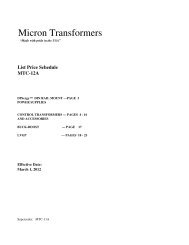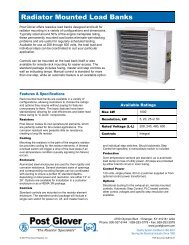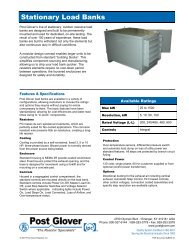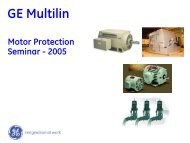Motor Protection Principles.pdf
Motor Protection Principles.pdf
Motor Protection Principles.pdf
You also want an ePaper? Increase the reach of your titles
YUMPU automatically turns print PDFs into web optimized ePapers that Google loves.
Unbalance <strong>Protection</strong><br />
• Indication of unbalance negative sequence current / voltage<br />
• Unbalance causes motor stress and temperature rise<br />
• Current unbalance in a motor is result of unequal line voltages<br />
• Unbalanced supply, blown fuse, single-phasing<br />
• Current unbalance can also be present due to:<br />
• Loose or bad connections<br />
• Incorrect phase rotation connection<br />
• Stator turn-to-turn faults<br />
<strong>Motor</strong> Relay<br />
• For a typical three-phase induction motor:<br />
• 1% voltage unbalance (V2) relates to 6% current unbalance (I2)<br />
• For small and medium sized motors, only current transformers (CTs) are available<br />
and no voltage transformers (VTs). Measure current unbalance and protect motor.<br />
• The heating effect caused by current unbalance will be protected by enabling the<br />
unbalance input to the thermal model<br />
• For example, a setting of 10-15% x FLA for the current unbalance alarm with a<br />
delay of 5-10 seconds and a trip level setting of 20-25% x FLA for the current<br />
unbalance trip with a delay of 2-5 seconds would be appropriate.<br />
25
















